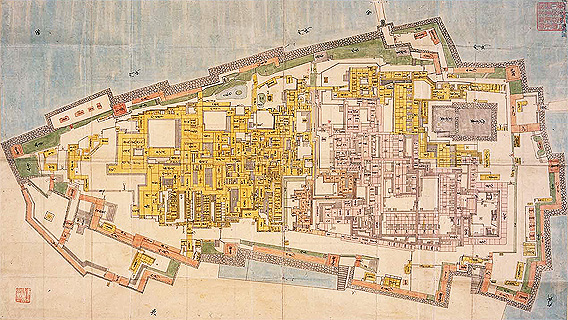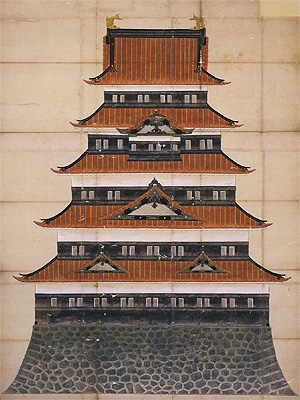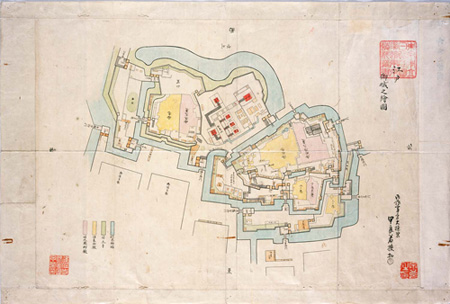A Visit in the Great Edo
A close-up on Edo castle / Cultural enlightenment' spotsWhat was inside the castle?
(Edo-jō Gohonmaru On'omote On'nakaoku On'ōoku Sōezu)
[Important cultural property related to the construction of Edo Castle]
When considering Edo-period castles, many people imagine castle keeps. In 1607 (Keichō 12), on the orders of Tokugawa Ieyasu, the initial keep of Edo Castle (called the Keichō Keep) was constructed on a scale that was far in excess of that of Osaka Castle, which had previously been constructed by Toyotomi Hideyoshi. The size of the Keichō Keep was designed to symbolize Tokugawa’s authority. Thus, at the time of its building it was the largest castle keep in Japan.
The castle keep was subsequently rebuilt on two occasions, firstly during the administration of Tokugawa Hidetada in 1623 (Genwa 9) and secondly during the administration of Tokugawa Iemitsu in 1638 (Kanei 15). Unfortunately, the keep was subsequently lost in 1657 (Meireki 3) to the so-called furisode kaiji (the kimono fire), which is better known to history as the Meireki no taika (The Great Fire of Meireki). Following this, the keep was not rebuilt and instead, greater emphasis was placed on reconstructing Edo. Indeed, it is said that reconstruction of the keep was halted in response to an opinion that "expending money on such a scenic site represented a waste." Later, the issue of reconstruction was again floated in 1712 (Shōtoku 2), however, reconstruction was not realized before the Tokugawa Shogunate ended.
Duplicate of the original by Great Master Kora Wakasa
Edo Castle is circled by an inner trench and consists of two parts: one is the residence of Tokugawa shōgun, while the other is that of the prospective Tokugawa shōgun. The former consists of three parts, such as "Honmaru", "Ninomaru", and "sannomaru", while the latter consists of three parts, such as "Nishinomaru", "Fukiage", and "Kitanomaru". Outside of this interior trench, there were residences of local feudal lords and those of townspeople as well as temples and shrines, all of which are surrounded by the outer trench. These two make up the whole part of the Edo Castle. Tokugawa Ieyasu commissioned Edo Castle and the city of Edo and they were finished as a whole in 1636 (the 13th year of kan-ei era) at the time of Tokugawa Iemitsu. The city was burnt down several times and reconstructed, but the size itself remained unchanged throughout the Edo period.
* To view more explanation, please click the each image.




